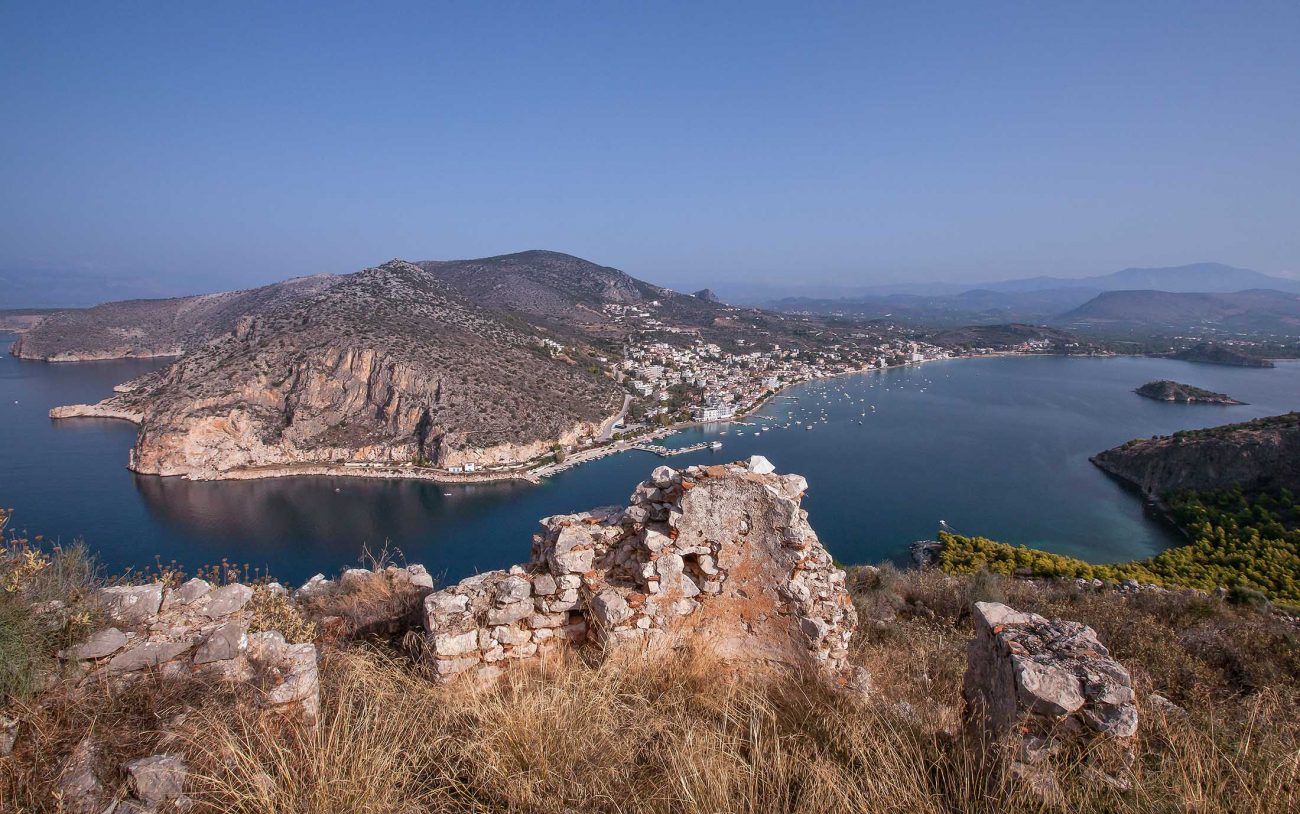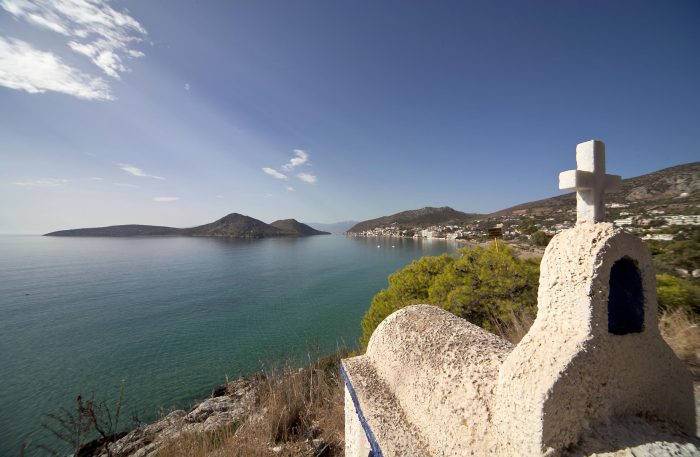The name of the town in Greek is Ναύπλιο or, and in Ancient Greek Ναύπλιον (thus the transliteration Nafplion). As is the case with many Greek names, there is more than one possible Latin transliteration. Currently, the most commonly used English spelling is Nafplion (or sometimes Nafplio like the Modern Greek way of saying it). Many sources, especially those dealing with the ancient city, refer to it by its Latin name of Nauplion. In other languages it is known variously as Nauplia, Navplion, Nauplio, Nafplion and Anapli. These names would have been current in English during the periods of Venetian and Ottoman domination. The city itself includes many praiseworthy monuments, such as the imposing Venetian arms depot, the Mosque in Syntagmatos square, the church of Saint Spyridonas, , the Bavarian lion, and other buildings along the promenade which compose this rare architectural and urban plan whole making Nafplio distinguish as the best preserved example of a neoclassical city of the 19th century.
The fortress complex of Nafplio is extensive and imposing. The oldest fortress is Akronafplia and on the opposite rocky hill, towering above the town, the famous Palamidi and in the harbour he Bourtzi. All three castles are remarkable not only for their archaeological importance but also for their incredible adjustment in the place’s topography.
Bourtzi
This small fortress is found in front of the harbour, in the shallow waters, and was connected, during the old times, by chains with the land, which is also the reason it was called Porto Cadena. It was built between 141 and 1473 and is made up of a tall octagonal shaped tower surrounded by lower semi-circular towers for canons facing East and West. During the Turkish rule the Turks filled the surrounding sea with stones acting as an obstacle for shipping. In later years the Bourtzi housed convicts awaiting execution. These days it is possible to visit the Bourtzi via a few minutes ride on a fishing boat whereby one has an unrivalled view of the harbour and old city of Nafplion.
Akronafplia
The oldest part of the city of Nafplio. Until the 13th century, it was a town on its own. The arrival of the Venetians and the Franks transformed it into part of the town fortifications. Later, part of it was used as a prison until the Greek government decided that the view provided from its location would benefit the local tourism and built a hotel complex which still stands there today.
The Palamidi Castle
The idea for the Palamidi was thought of by Morosini, Corner & Grimani although the plans were eventually made by Grimani and carried out by Agostino Sagredo. The complex consists of eight strongholds joined and protected by one wall. Inside the bastion of the fortress lies the church of Saint Andrew. It has a hemicylindrical dome and its half east side steals into one of the arches that support the walk of the walls. The open part of the church is double-aisled. The construction was completed within three years (1711-1714). One year later (1715) the Turkish Army of 100,000 entered the Peloponnese and took the Palamidi and Acronafplia for their own uses. During its history the Palamidi has been used many times as a prison for high security convicts. The fortress can be reached in two ways, one by road through the neighbourhood of Pronoia and the other via the rumoured 999 steps from the edge of the old city.
Nafplion Archaeologocal Museum
The Museum is situated in the three floor building heading Syntagmatos Square built in 1713 which was used at one time as a barracks and storage space for the Navy. The archaelogical collection is remarkable containing Prehistoric and Mycenaen findings from the entire Argolida. It also accomodates excellent pottery from the first Mycenaen times with themes taken from a conquered naturalism. These beautiful pieces come from the graves in Dendra (Midea), Prosimni and Kazarma. The most revered possesion of the museum is the copper suit of armour dating back to 1450 – a unique discovery – from the chamber grave in Dendra, together with the guns and other articles of the dead leader. On the second floor of the building, among the exhibits, the guns and the helmet of a warrior of post-mycenaen times can be found. A priceless collection of pots and weapons of early-geometric and geometric times from Asini and Tirintha, as well as a statuette and other items from the ancient temple in Tirintha are kept in the halls of the museum.
Trianon
Another building of historical significance, during the Turkish rule this building was a mosque. Today it is used as a theatre.
The Bavarian Lion
Chiselled from rock by the sculptor Siegel close to the suburbs of the neighbourhood of Pronoia by order of Ludvic, the King of Bavaria and father of Otto in honour of the Bavarians who died during the typhoid epidemic in Nafplio which devastated the area beteween 1833/34.


